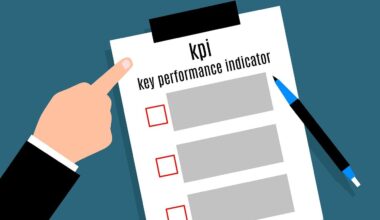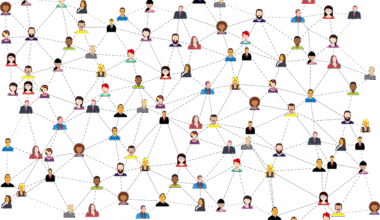Welfare Economics and Labor Market Dynamics
Welfare economics primarily evaluates the well-being of individuals in an economy and how resources can be allocated to maximize social welfare. This subfield of economics attempts to determine the optimal distribution of resources, taking into account individual preferences and societal needs. Labor market dynamics play a crucial role in understanding welfare economics as employment opportunities, wage levels, and working conditions directly impact individual welfare. In the context of labor markets, welfare economics can analyze how changes in labor policies affect the overall happiness and economic security of the workforce. By focusing on equity and efficiency, welfare economics seeks to find balanced solutions that encourage economic growth while supporting vulnerable populations. Evaluating labor market dynamics requires assessing various factors such as labor supply and demand, wage variations, and the impact of unemployment. Policies designed to improve labor market outcomes must consider these dynamics in order to enhance overall welfare. Thus, welfare economics serves as a foundation for designing effective labor policies that strive to elevate societal well-being, contributing positively to economic development and prosperity.
As we delve deeper into labor market dynamics, it is essential to recognize the interplay between labor supply and demand. When analyzing employment trends and wage fluctuations, welfare economists aim to understand how individuals make decisions concerning work. The labor supply represents the workforce available for employment, influenced by factors such as wage rates, education, skills, and demographics. On the other hand, labor demand is determined by employers’ need for workers based on the production of goods and services. An imbalance between supply and demand can lead to unemployment, underemployment, and wage disparities, affecting overall welfare. For instance, if the labor supply exceeds demand, competition for jobs increases, potentially driving wages down. Conversely, when demand outstrips supply, employers may offer higher wages and improved benefits to attract talent. Welfare economics examines these shifts to identify policies that can stabilize labor markets and enhance employment prospects. By implementing measures such as job training programs, minimum wage laws, and social safety nets, welfare economists aim to bridge gaps in the labor market and support workers while promoting an equitable distribution of resources.
The Role of Government in Labor Markets
Another critical aspect of labor market dynamics is the role of government intervention. Welfare economics suggests that market failures can occur in labor markets, necessitating government action to correct imbalances. For example, regulations are often established to protect workers’ rights, ensure fair wages, and prevent discrimination in hiring practices. These interventions are designed to promote equitable treatment of all individuals within the workforce. Additionally, government programs that provide unemployment benefits or job retraining can mitigate the negative effects of job loss on individual welfare. Welfare economics supports such initiatives, arguing that they not only support affected workers but also enhance overall economic productivity by allowing displaced workers to transition into new roles. Moreover, government investment in education and workforce development can address long-term labor market challenges by equipping individuals with skills that match the evolving demands of the economy. This approach not only bolsters individual well-being but also contributes to a more resilient and adaptive workforce, ensuring that the overall labor market functions effectively and efficiently in a rapidly changing economy.
As changes in technology and globalization shape the economy, labor market dynamics must adapt to new realities. The rise of automation and artificial intelligence has resulted in a significant transformation in how work is performed, creating both opportunities and challenges for labor markets. Welfare economics focuses on understanding these shifts and identifying ways to support workers affected by job displacement. As certain jobs become obsolete, individuals may struggle to find new employment, resulting in increased unemployment rates and decreased social welfare. In this context, welfare economists advocate for policies that promote retraining and reskilling programs to help workers transition to new roles in emerging industries. Furthermore, addressing income inequality, which can be exacerbated by technology-driven job losses, is crucial. Implementing progressive taxation and social safety nets can ensure that the benefits of technological advancements are distributed more equitably. By focusing on labor market dynamics, welfare economics aims to foster an inclusive economy that not only adapts to changes but also protects the well-being of all individuals, regardless of their position within the workforce.
Effects of Education on Labor Market Outcomes
Education plays a vital role in determining labor market outcomes and ultimately influencing individual welfare. Higher levels of education often lead to better job opportunities, higher wages, and increased job satisfaction, all of which contribute positively to a person’s overall well-being. Welfare economics underscores the importance of investing in education as a means of empowering individuals and enhancing labor market dynamics. By equipping individuals with the necessary skills and knowledge, education helps bridge the gap between labor supply and demand. Enhanced educational programs and vocational training can create a more skilled workforce, allowing economies to compete effectively in the global market. Additionally, access to quality education remains a significant factor in reducing income inequality, as individuals from diverse backgrounds can improve their economic prospects through learning. Welfare economists argue that policies aimed at expanding educational access and improving educational quality can lead to better labor market outcomes, ultimately elevating social welfare. Thus, the integration of education within welfare economics is essential for promoting economic development and addressing disparities within labor markets.
Emphasizing the importance of job satisfaction is another area where welfare economics intersects with labor market dynamics. Job satisfaction significantly affects an employee’s overall life satisfaction and well-being. Higher job satisfaction can result in lower employee turnover, increased productivity, and greater loyalty to employers. Welfare economics acknowledges that individuals derive utility not only from their wages but also from their experiences in the workplace. Factors influencing job satisfaction include workplace culture, managerial practices, and employee recognition. Governments and organizations can implement policies aimed at improving workplace conditions, fostering an environment that promotes employee well-being. For instance, flexible work arrangements, generous leave policies, and professional development opportunities can lead to enhanced job satisfaction. By investing in human capital and prioritizing employee welfare, businesses can create a more engaged workforce, contributing positively to economic growth. Moreover, welfare economics highlights that a satisfied workforce can reduce social tensions and ensure a harmonious labor market, further enhancing overall societal welfare. Fostering an environment of job satisfaction and support ultimately serves to benefit individuals, organizations, and the economy as a whole.
Future Perspectives on Welfare Economics
As we look to the future, the integration of welfare economics with labor market dynamics will continue to evolve as new challenges arise. Climate change, demographic shifts, and technological advancements present unprecedented challenges for the labor market, requiring innovative approaches to welfare economics. Policymakers must balance economic growth with social welfare by ensuring that labor markets adapt to these changes. For example, the transition to a green economy may necessitate reskilling workers in traditional industries while fostering new job opportunities in renewable energy sectors. Welfare economics will play a critical role in identifying effective policies that promote sustainability and social equity. Furthermore, addressing the needs of marginalized populations, including women, minorities, and low-skilled workers, will be essential to create a more inclusive labor market. The future of welfare economics lies in its ability to adapt and respond to the complexities of modern economies, ensuring that individuals are not left behind in the pursuit of progress. By focusing on equitable resource distribution and informed policy decisions, welfare economics can contribute positively to societal welfare as labor market dynamics continue to evolve.
In conclusion, understanding the intersection of welfare economics and labor market dynamics is vital for creating policies that enhance overall well-being. The interplay between labor supply and demand, education, job satisfaction, and government intervention shapes the landscape of the workforce and determines individual welfare. As economic conditions evolve, welfare economics must adapt, ensuring that labor markets become more resilient and inclusive. Prioritizing worker welfare through investments in education and training while addressing income inequalities can promote positive labor market outcomes and enhance social welfare. Current challenges, including technological advancements and climate change, will require innovative solutions that foster sustainable economic growth while supporting vulnerable populations. Policymakers must collaborate with economists to develop strategies that consider the complex relationship between labor markets and individual well-being. While navigating these challenges may be daunting, the potential for improved social welfare is significant. Emphasizing equity, opportunity, and inclusivity will be crucial in shaping labor markets that elevate all individuals. The future trajectory of welfare economics should focus on fostering environments where both individuals and economies can thrive, demonstrating a commitment to collective well-being.


